BIG Japanese Food Guide: 25 Japanese Food Culture Facts, 19 Must-Try Foods, and 6 Top Restaurants

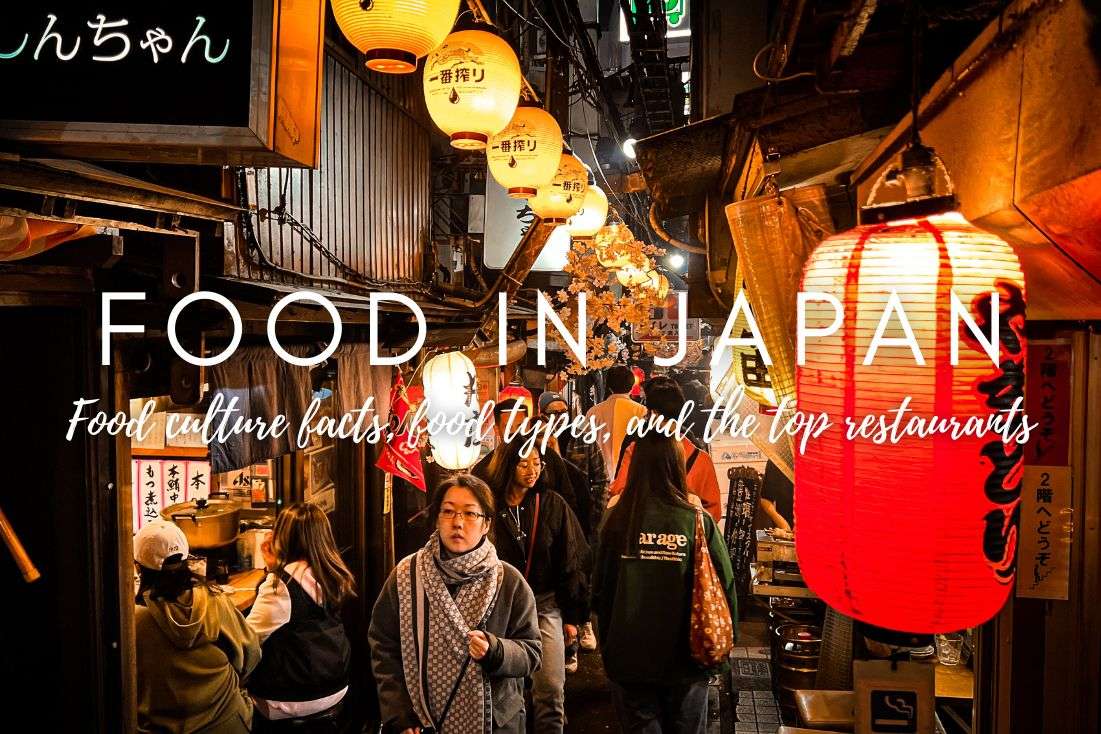
Japan’s more than just sushi and ramen. As with everything Japanese, you can expect history, tradition, and a bit of quirkiness in Japanese food. Discover fun facts about Japanese food culture, tips that’ll come in handy when you travel and eat in Japan and understand the etiquette of dining in Japan.
On top of all that, cause I am aiming for the role of your personal Japanese food guru, I’ll impart a list of the country’s most beloved dishes onto you, so you know what to try and what to not try (sake with jasmine tea? A warm, savory dessert?). Plus, I'll share my personal favorite restaurants.
Whether you're a seasoned foodie or a curious traveler, prepare to have your taste buds tantalized and your culinary horizons broadened.
I’ll start by talking about the top foods and drinks in Japan that you have to give a try, then, I’ll guide you through facts about Japanese food culture, and finally, I’ve added a list of my favorite restaurants in Japan.
19 Japanese foods and drinks that you must try (...or should you?)
The following are Japanese foods and drinks that you should know and expect to try when you travel to Japan.
Tip: Ready to go? Here’s my 2-week Japan itinerary! I know you want to embark on a food tour just about now.
Sushi
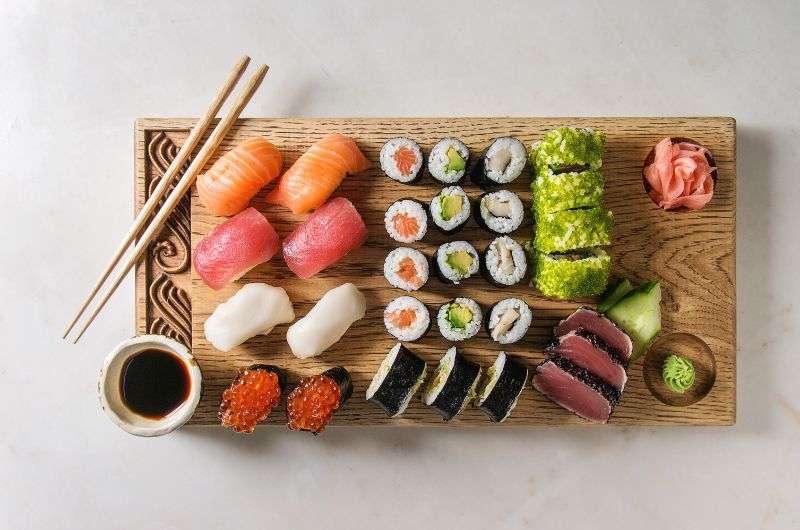
Sushi is delicious to look at!
Everyone knows that sushi is, but not everyone knows that it’s not the fancy-looking ingredients that are the star of the show. Step aside tune, eel, yellowfin, and salmon, I’m here for the rice! Once again, the rice makes or breaks the dish. Sushi in Japan is simple and elegant, none of that California roll nonsense.
Ramen
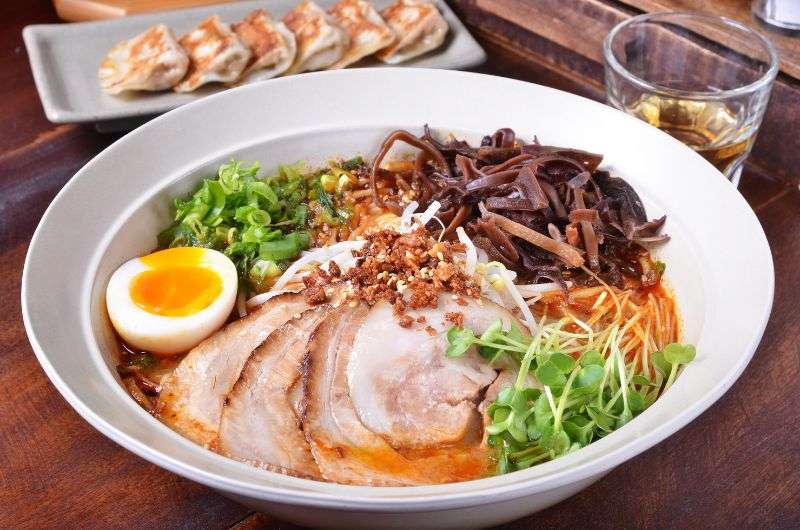
Ramen is served in a variety of ways
Ramen is a big bowl of noodle soup full of tender, wheat-based noodles, a unique-flavored savory broth, and varied toppings (mushrooms, bean sprouts, seaweed, bok choy, egg, to name a few classic ones). Each region in Japan offers its unique twist. Japanese ramen is not instant noodles, unless you’re shopping in the US.
Udon
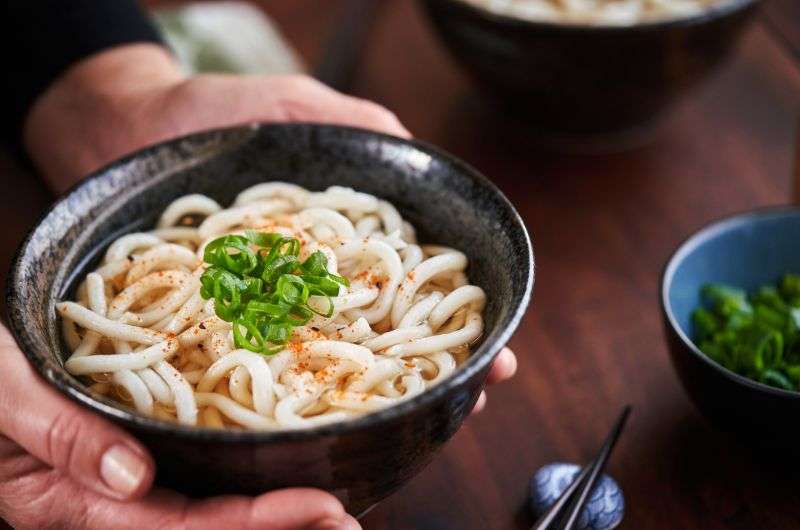
Udon noodles
Udon is a type of wheat noodle in Japan. When fresh, they are thick and chewy and I’m not the biggest fan, but I’m also not Japanese, so maybe I don’t get it. They have no flavor whatsoever, but they’re great at absorbing the taste of whichever broth they are in. You usually get a choice between udon noodles and soba noodles when ordering a soup or stir fry in Japan.
Soba
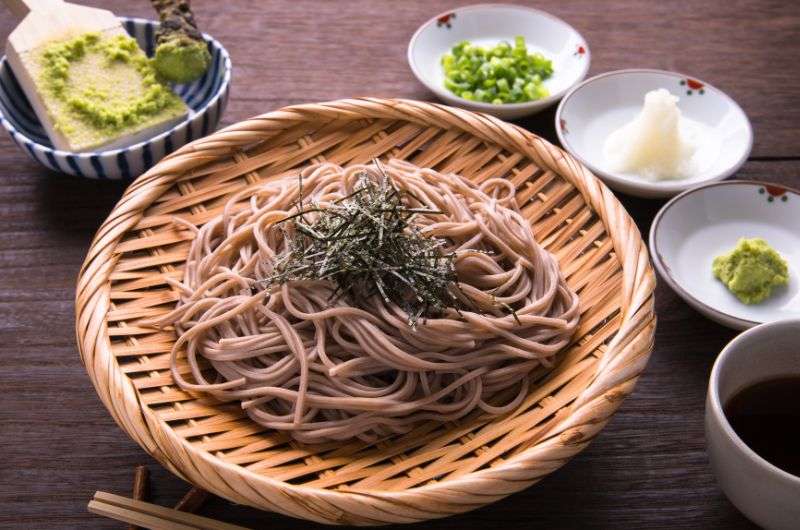
Soba noodles
Soba are noodles made of buckwheat, which gives them a nutty flavor and a light brown color. They can be added to not only soup but also stir fries, and even served chilled as part of a salad or with a dipping sauce.
Tempura
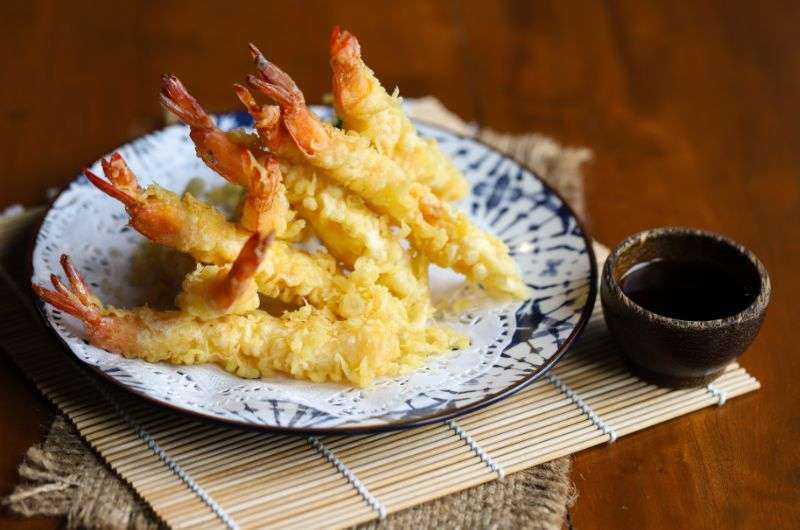
Fried dish coated in batter—tempura
Enough with the noodles—tempura is a Japanese fried food, or rather, foods. Anything you coat in the batter and deep fry is tempura, but usually you’ll be getting vegetable tempura or shrimp tempura. It’s lovely. It often comes with a sauce and different types of salt to dip into, so you can change the taste as you wish. Tempura, despite being a fried food, should taste light and not be dripping with oil.
Wasabi
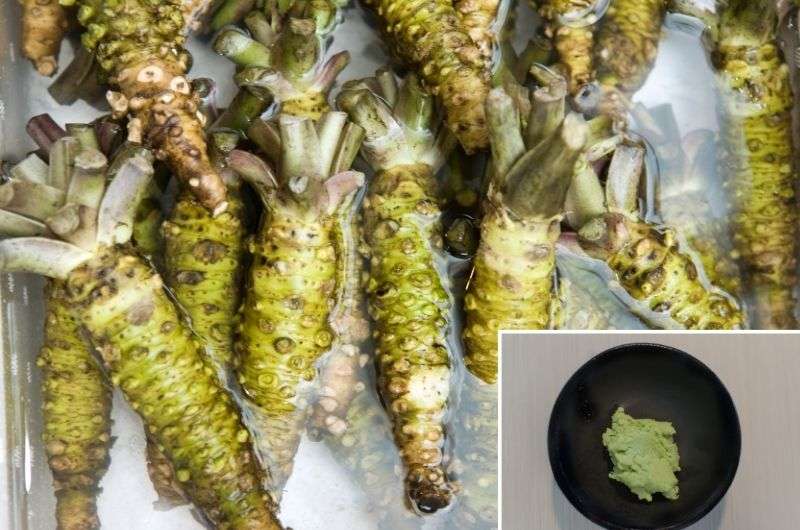
True Japanese wasabi is not comparable to what we know from Europe and America
If the wasabi you eat is very pasty and thick, it’s likely fake, and it sure as heck wasn’t grated on shark skin, as it’s supposed to be. And they’ve added green coloring to it.
Real wasabi, aka Japanese horseradish, is grown in the stream beds of Japan, and notoriously difficult to cultivate, making genuine wasabi a prized (and expensive!) possession. Its spicy, sinus-clearing intensity is balanced by a unique, almost sweet aftertaste. Unlike its often-used substitute (European horseradish), real wasabi offers a complex flavor profile that's as intriguing as it is intense.
You’ve had it with sushi, but it is also used in sauces and dips and can add a punch to almost anything, from chicken to tofu.
Wagyu steak
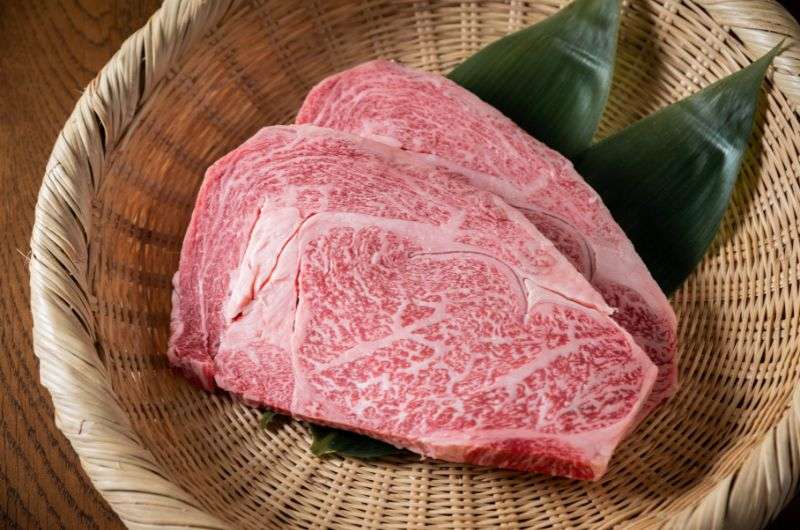
Wagyu steak
The crème de la crème of steaks, Wagyu, with its unparalleled marbling, delivers a melt-in-your-mouth texture and a rich flavor that's truly in a league of its own. It's a luxurious indulgence that spoils you for anything else.
Gyoza
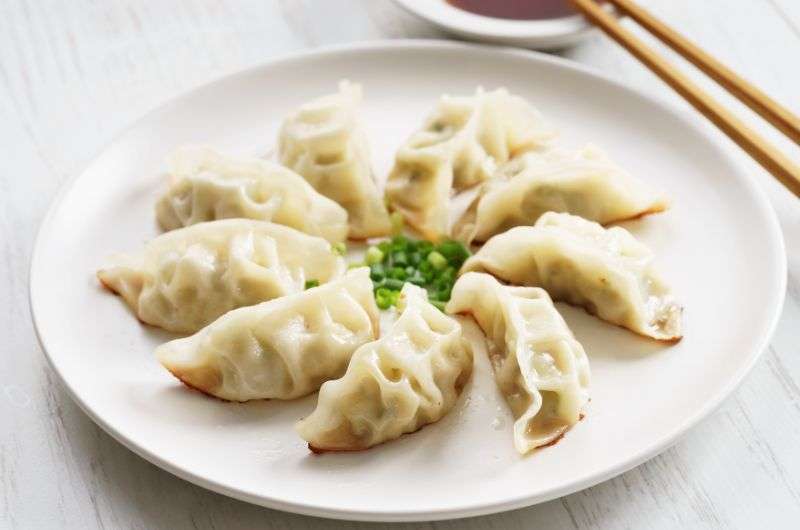
Gyoza are Japanese dumplings
Gyoza are traditional and omnipresent Japanese dumplings that can be finished in several different ways, from steaming to frying. Gyoza are filled with a meat base (usually pork) and then everything from garlic and cabbage to mushrooms and, you guessed it, soy sauce! If you’re looking for a staple Japanese fried food, try gyoza. Perfectly pan-fried, they're juicy on the inside, crisp on the outside, and utterly irresistible. There are non-fried versions as well though.
Steamed shabu-shabu
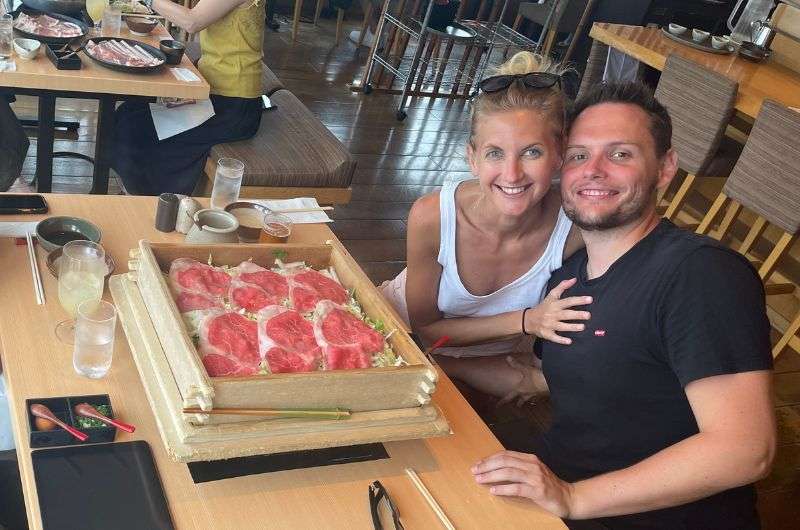
We loved shabu-shabu
Picture this – thin slices of wagyu beef or duck, steamed alongside fresh veggies. A pro tip? Season with a pinch of salt or a dash of pepper to elevate the flavors.
Miso
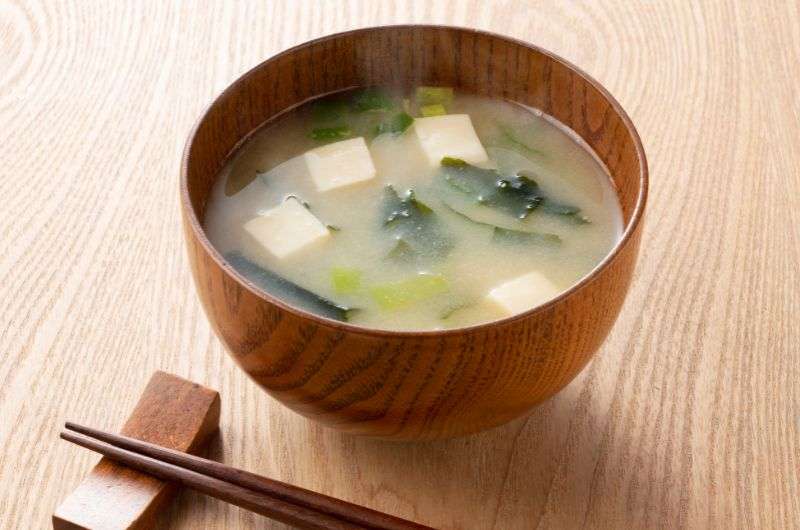
Miso soup
Miso is thick paste that’s a versatile ingredient in Japanese cuisine with a deep, umami-rich flavor. It's the backbone of many Japanese dishes, giving them a savory warmth. It’s made by fermenting soybeans with salt and kōji (a fungus) and sometimes rice, barley, or seaweed. Again, lots of probiotics, explaining why Japanese food is so healthy. Miso soup is a popular part of any meal of the day in Japan (you just drink it from a small bowl).
Kyuri Asazuke aka Cucumber on a stick
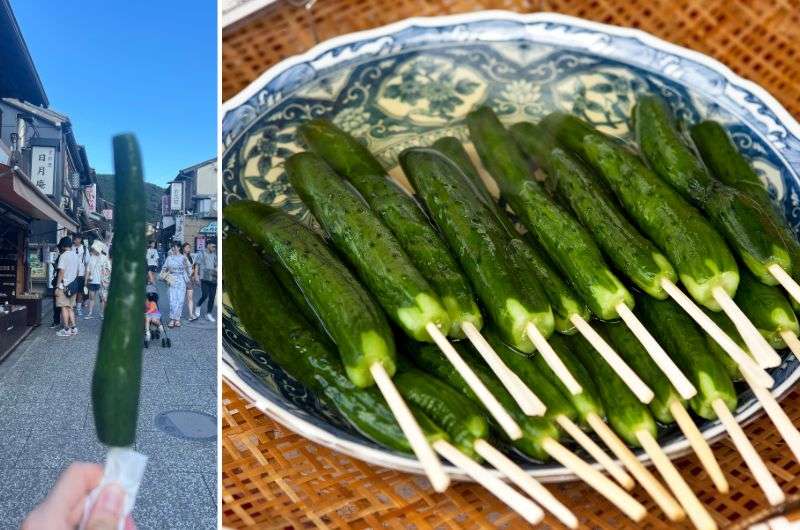
I’m not going to say what it looks like...
Especially on hot days in the city or at large events you’ll see everyone walking around eating whole cucumbers on sticks. And you won’t think I’m so childish to mention how ridiculously phallic is looks once you see it, because it simply does! The cucumbers are pickled, and are sold at street vendors and in stores, so you’ll probably get your own dick on a stick sooner or later. It is refreshing, not gonna lie.
Kimchi (ki-mu-chi)
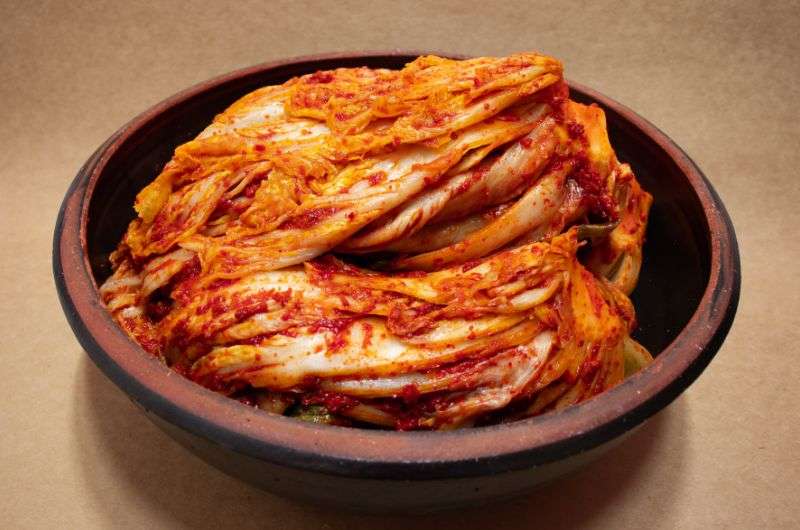
Kimchi actually comes from Korea
Though Korean in origin, kimchi has found a firm place in Japanese cuisine. This spicy, fermented cabbage adds a punch of flavor and a boost of health benefits (fermented = probiotics). You can eat it as a side dish or over rice, as a soup topping, and probably other ways that I don’t know of yet. You better be ready for that kick of chili!
Rice in miso soup with soybean paste
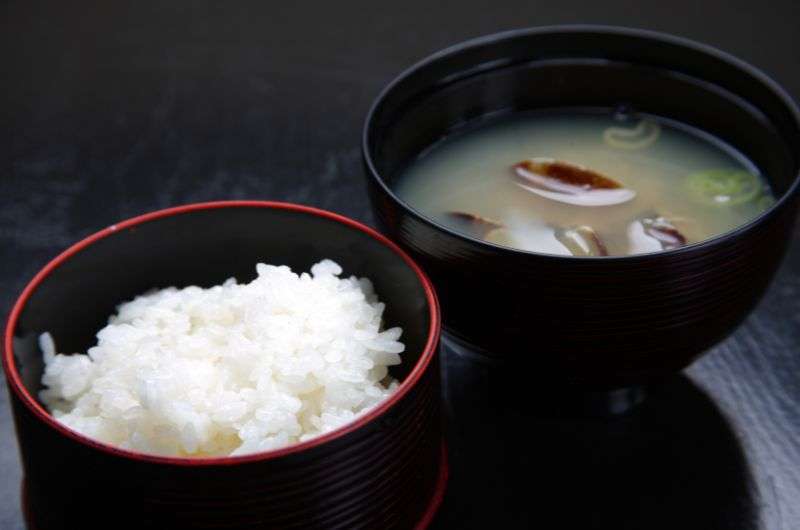
Mix of deliciousness!
This tastes like a warm popsicle! Just lovely! Imagine a dessert that combines the savory depth of miso with the creamy texture of soybean paste. I know it sounds weird, but just trust me and try it.
Shinano beef skewers
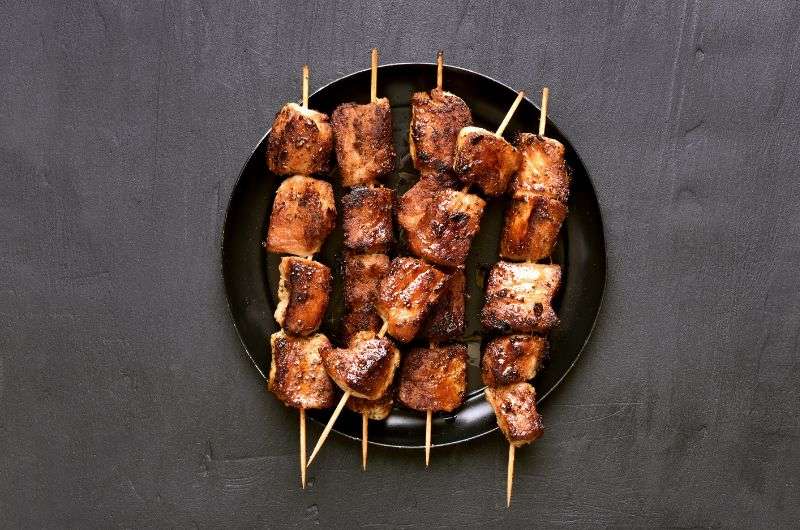
Shinano beef skewers
Shinano, with its lush landscapes, also offers some stellar beef. And I like me some beef! Skewered and grilled to perfection, this beef is a testament to the quality of Japanese meat, combining tenderness with a smoky flavor that's absolutely unforgettable.
Rice burgers
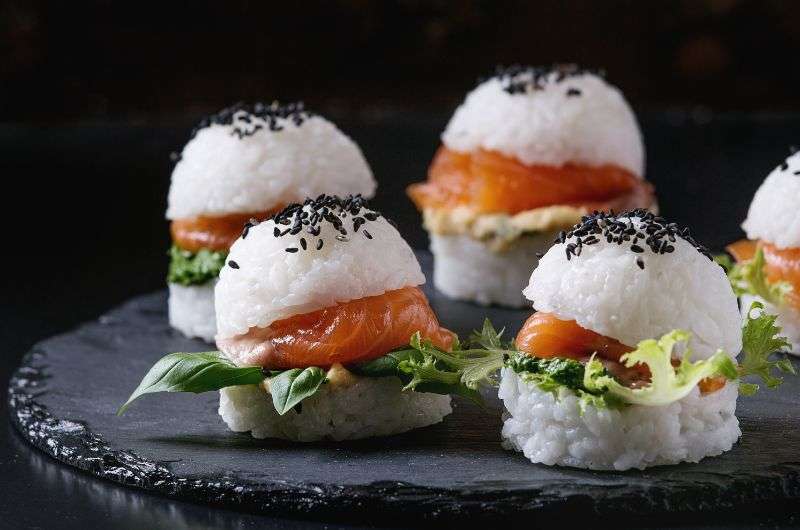
Rice burgers are more of a snack
Rice burgers are the ultimate Japanese snack—think traditional burger vibes but with compressed rice instead of bread patties. Ingenious and delicious. Rice burgers were invented by a Japanese fast food restaurant in the 1980s and has been a hit ever since then.
Ice cream
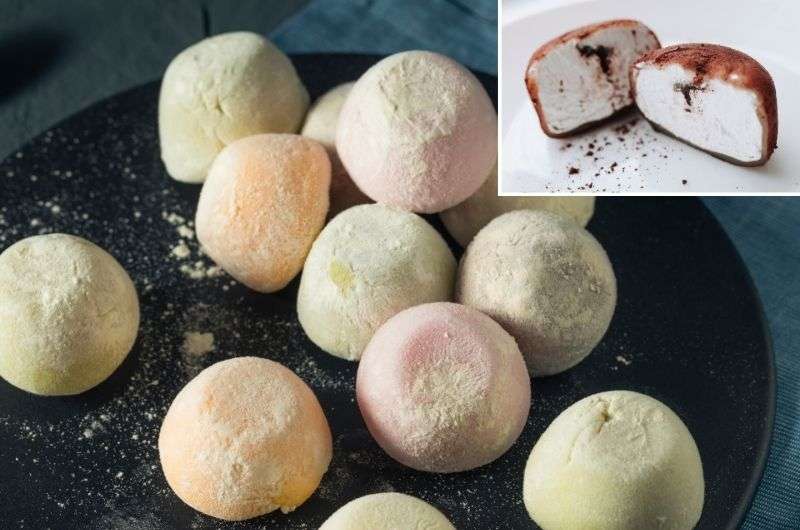
So unique and so good but not very refreshing...
I need to write about ice cream in Japan because we visited smack in the middle of summer and it was hot, ok? The ice cream there is rich and creamy, and while that sounds great, it’s almost to a fault. The intense richness (read: amount of fat) can be overwhelming and instead of cooling me down in the heat of Japanese summer, it made me sweat and feel heavy.
Birru (Beer)
Asahi and Sapporo are my go-to brews in Japan and the perfect companion to just about any meal. They're icons of Japanese brewing, each with a distinct flavor profile. Asahi Super Dry is known for its crisp, light flavor and clean finish, and is incredibly refreshing. Sapporo, on the other hand, has a slightly richer and more robust taste, with a balance of malt and hops that gives it a bit more body.
Sake
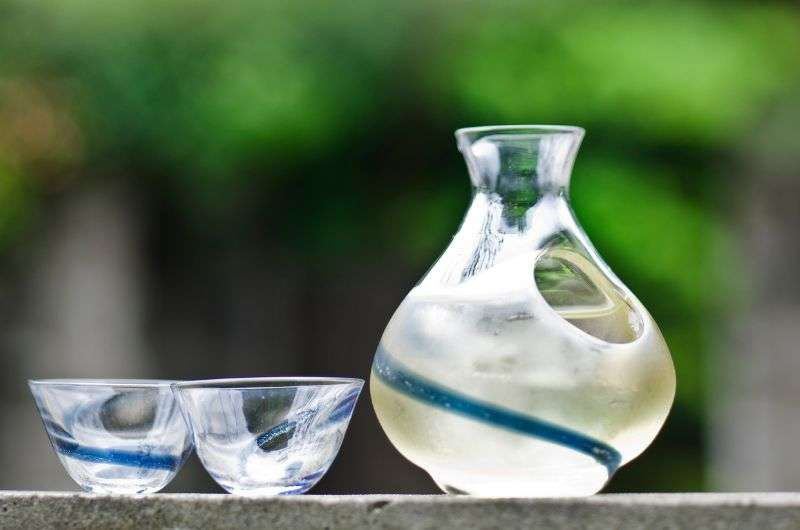
Sake is served during the appetizer in Japan
Sake is a Japanese rice liquor that is mostly enjoyed during the appetizer portion of your meal (but you can keep sipping it with your sushi, and you’ll sometimes also get it as a digestive).
You can have it hot or cold, but remember it’s not a shot, so sip it slowly like you would wine. It’s a social drink, so if you finish your (tiny) cup, there will be somebody that will probably refill it. If you don’t want a refill, keep a bit of sake in your cup. Oh, and hold it with both hands.
Top quality sake is never consumed hot, because the heat would destroy the precisely brewed smells and tastes that they worked so hard to get in there. Then again, you also don’t want your sake super cold, which does nothing for the taste, either.
Sake in jasmine tea
Sake in jasmine tea is a blend I found to be interesting, and by interesting I mean meh. I guess you could call it a combination that showcases Japan's experimental spirit in beverages, but it didn’t quite hit the mark for me. I’ll just take the sake, thanks.
25 FAQs about Japanese food and food culture
1. Japan's dining standards = A perfectionist's paradise
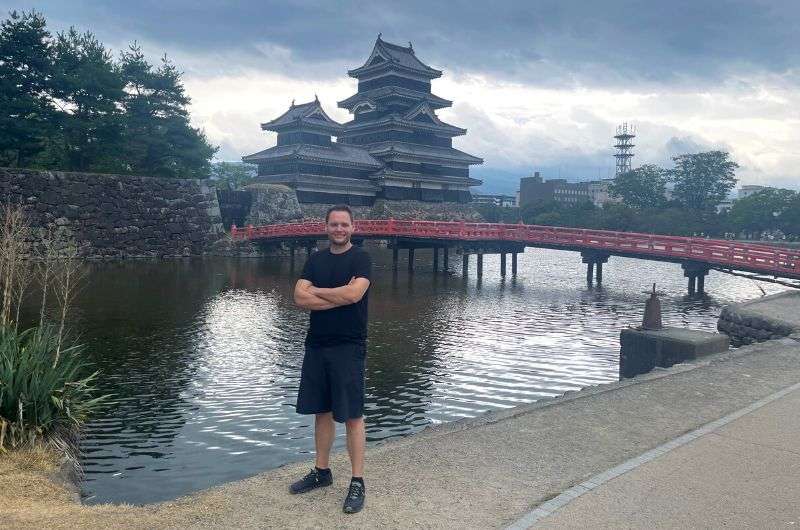
During my trip to Japan, I tried a lot of Japanese cuisine and you can be sure—I'm an expert at giving honest reviews!
In Japan, their standard for what's "okayish" would probably make a Michelin inspector back home raise an eyebrow. It's like walking into a world where "just fine" is the new "not good enough." Dining out? You're in for a treat, because even the places locals consider average are pretty stellar by my (high) standards. It's a refreshing change of pace where you learn pretty quickly to expect the best.
2. Uniform pricing is a welcome change
Here's a fun fact: whether you're chilling in a Tokyo karaoke bar or scaling the heights of Mount Fuji, a beer will cost you the same: JPY 800. It's like there's an unspoken rule that everything must be fair and square. The honesty in pricing across Japan is kind of admirable... and also a bit of a relief to your wallet. It's not just about the beer; it's the principle. No surprises, just honest-to-goodness consistency.
3. The honesty of Japanese cuisine
Speaking of honesty, it's not just in their pricing. The Japanese put a serious amount of integrity into their food. It's almost as if cheating on ingredients is a greater sin than skipping your morning bow. And guess what? Eating out in Japan can be way cheaper than in the States—sometimes even a third of the price! Who said you can't have your sushi and eat it too?
4. Tipping in Japan
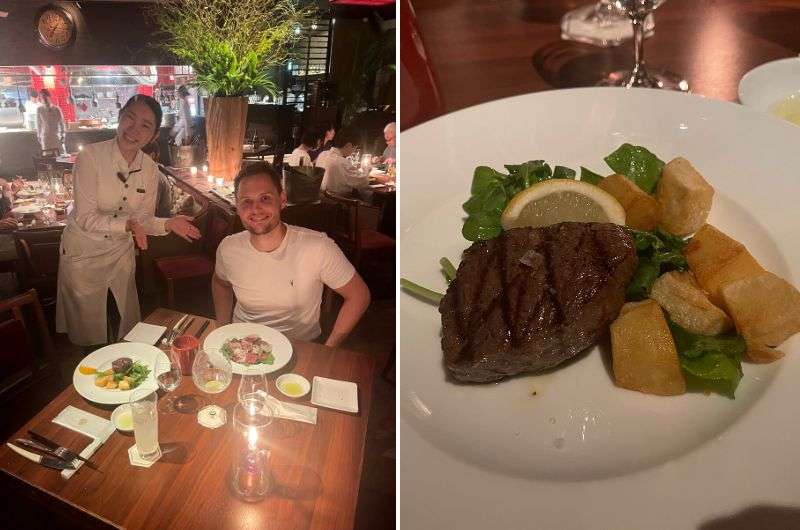
We were very happy with our server at the Fujia Gohonjin Restaurant. A tip would not be a compliment for her though
Tipping in Japan? An absolute no-go. Considering the amazing service you’ll almost always get in Japanese restaurants (and basically everywhere else), it may feel weird not to tip, especially if you’re from the US where tips are like half of what you spend in a restaurant. But don’t do it, it’s offensive, and your tip will be returned to you.
Why? Bringing your cash to a restaurant or other establishment and spending it there is considered enough. The refusal to accept tips is ingrained in the Japanese culture that prizes service and dignity, basically meaning it’s a no-brainer for them to give them you top service. You giving a server extra money means you think they did something out of the ordinary, while for them it’s simply doing their job well.
Tipping in Japan is kind of like clapping on the airplane after landing. That little tradition is annoying to pilots because you’re saying ”Omg, you landed the plane, good job!” If you thought it was a good idea, maybe you also need to read up on some other tips for first-time flyers.
Also, paying at the cash register, instead of the table, underscores this ritual of mutual respect. It felt strange at first, leaving without the usual tip-and-thank-you exchange, but it quickly became a refreshing norm.
5. Service with a bow: Beyond world-class
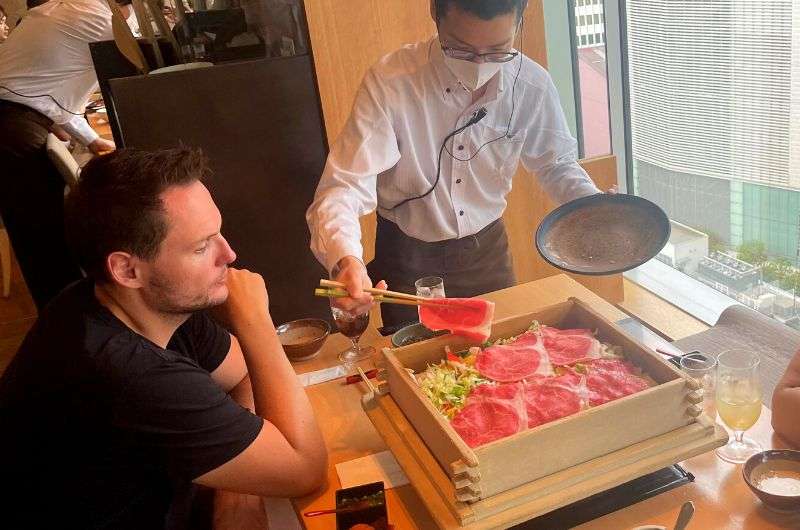
Japanese are good at customer service!
Speaking of service, everywhere I went, the level of service was nothing short of mind-blowing. It's not just being polite; it's a whole other level of hospitality. You're treated with such care and respect that you find yourself wanting to leave a massive tip, only to remember—oh right, that's not how things are done here. It feels odd at first, stepping away without that customary gesture of appreciation.
Japanese hospitality is rooted in the concept of 'omotenashi,' which translates to selfless service. Obviously, your server at the restaurant isn’t working for smiles and is actually getting paid, but I’ll bet they’d be just as nice if they were there for free. From the moment you step into a restaurant, you're treated with a level of care that makes you feel both honored and humbled.
6. What not to do with chopsticks
If you’re going to Japan, it’s a good idea to practice holding those chopsticks! While you’re at it, make sure to understand some basic rules about how to (and how not to) use chopsticks:
- It’s impolite to point to people with chopsticks, so even if you put your chopsticks down, put them at an angle so they aren’t pointing to the person sitting across from you.
- Don’t rub your chopsticks together. It implies that you think the restaurant gave you shite quality chopsticks.
- Don’t stick your chopsticks upright in your food. This is similar to a tradition that’s done at funerals. Similarly, don’t pass food from chopsticks to chopsticks (unless you want to look like you’re passing around a dead person’s bones following cremation). And don’t cross your chopsticks when you put them down (also something about death).
- Don’t stick chopsticks in your mouth, pick your teeth with them or lick them.
- Once you are done eating, put disposable chopsticks back into their bag; non-disposable chopsticks are laid to the left of your plate or bowl.
7. Is food in Japan expensive?
Eating out in Japan is much cheaper than I imagined, and my food budget stretched to unexpected lengths! Japan is known to be an expensive country to visit, but you know what surprised me? The cheap food! I like a high-quality meal, and we ate to our hearts content during our trip to Japan this past summer. w
To give you a comparison, most of our dinners would have cost 3x as much in the US. And we’re talking epic, mouth-watering meals. I’m hungry just thinking about it.
8. Soy sauce for everyone!
Soy sauce, oh boy, it's everywhere, and not just as a sidekick to sushi. It's in everything—even dessert!—, adding depth and character to dishes in ways I hadn't imagined. It made me see soy sauce in a whole new light—not just as a condiment, but as a cultural staple, an essential thread in the fabric of Japanese dining.
9. You’ve been eating sushi all wrong
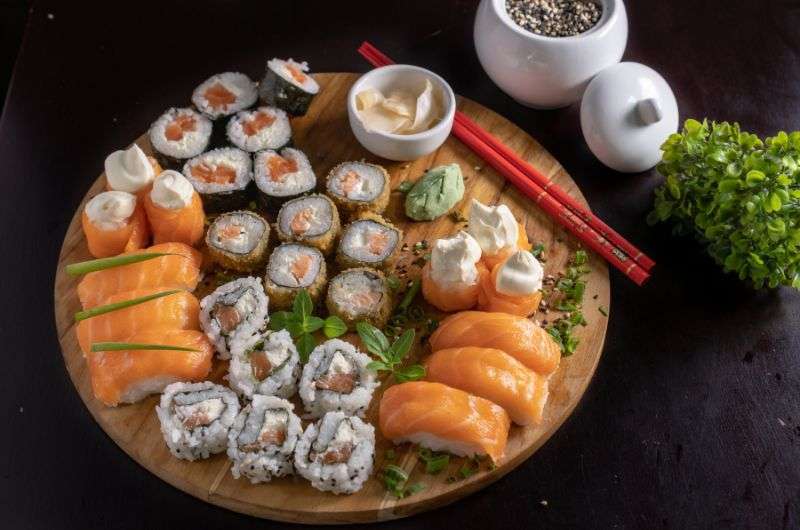
Not many people know how to eat sushi correctly
Put down your chopsticks and pay attention to some quick tips on how to eat sushi in Japan:
- Eat sushi with your hands. Make sure to wipe them with the hot towel your given first. But some people will use chopsticks as a matter of personal preference.
- Sashimi isn’t sushi (sushi is something with rice, while sashimi is just fish), so eat that with chopsticks
- When eating nigiri, the one where there’s a slice of fish lying on top of a blob of rice, place it in your mouth with the fish on the bottom so that it touches your tongue
- Sushi is meant to be eaten in one bite
- Sushi with white meat is eaten before sushi with red meat
- Use the pickled ginger in between bites as a palette cleanser only
- Dip the rice side in soy sauce (sparingly), not the rice side
10. Rice is the most important food in Japan
Rice is almost always served plain, without any spices, not even soy sauce! It’s so good that adding anything to it would be offensive. It’s Japan’s no. 1 food: 94% of the Japanese population eats rice at least once a day for a whopping total of 50 kg (110 lb) of rice eaten per capita every year. Compare that to around 10 kg (22 lb) of rice per capita in Europe and the USA (but also the 130 kg or 285 lb of rice they eat in China!).
You’ll also notice that every spot that isn’t forest is a rice field. Rice is everywhere.
11. The most important part of your meal is on the left side
Always notice what is served on the left side of your plate—that’s the most important part of the meal you ordered. Not surprisingly, rice usually takes that spot.
12. Only order as much as you can eat
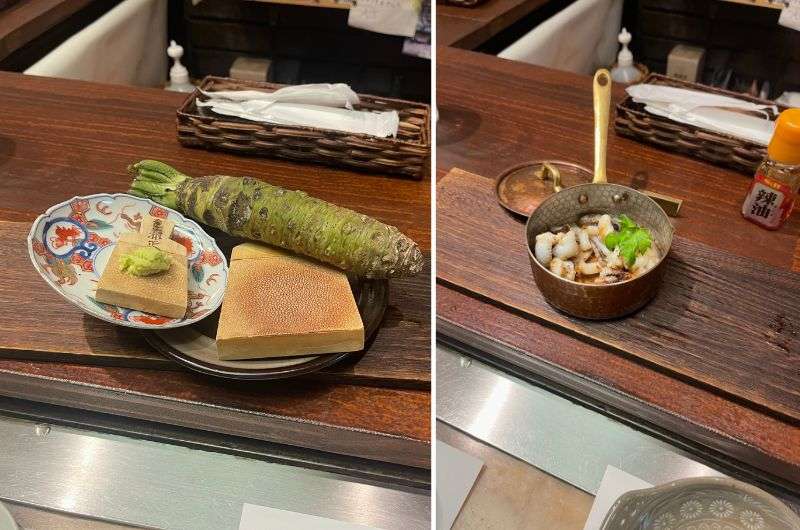
No leftovers in Japan!
Leftovers are the equivalent of putting ginger on your sushi, pointing at everyone with your chopsticks, drinking sake as a shot, and then tipping the waiter. It’s just despicable. You might as well spit in the chef’s face. That’s to say: don’t have “big eyeballs”, as the Czech saying goes. Imagine all the thanking and respect-showing when you get your food served to you and following that up with them having to throw that same, respected food into the garbage because you didn’t have the decency to eat it.
A little Czech fun fact: The Czech saying "mít velké oči" translates to "to have big eyes," which means taking or wanting more than one can consume or needs. It's often used to describe situations where someone's eyes are bigger than their stomach, especially in the context of food, but it can apply to other situations involving greed or overestimation of one's capacities.
13. Coffee in Japan is a surprising delight
So, you think Japan is all about tea ceremonies and matcha? Think again. Their coffee game is surprisingly strong—and I'm not just talking caffeine levels. I'm a bit of a coffee snob, and Japan left me pleasantly surprised despite expecting absolutely nothing good coffee-wise. I found the best cup in the winding alleys of Kyoto's old merchant quarter. Japan, you've got a secret weapon in your coffee, and I'm here for it. I found the coffee bad even in most countries I had high hopes for, so for Japan to score high on my coffee radar was a true (and tasty) surprise.
14. Fish are never fried
Ok, maybe not never ever, but rarely. Most often, you’ll get your fish straight off the grill. It’s because of the smell and taste that’s rather fishy off a pan, but never when you grill it. Japan knows its fish, so I’d trust them!
15. You can drink your soup
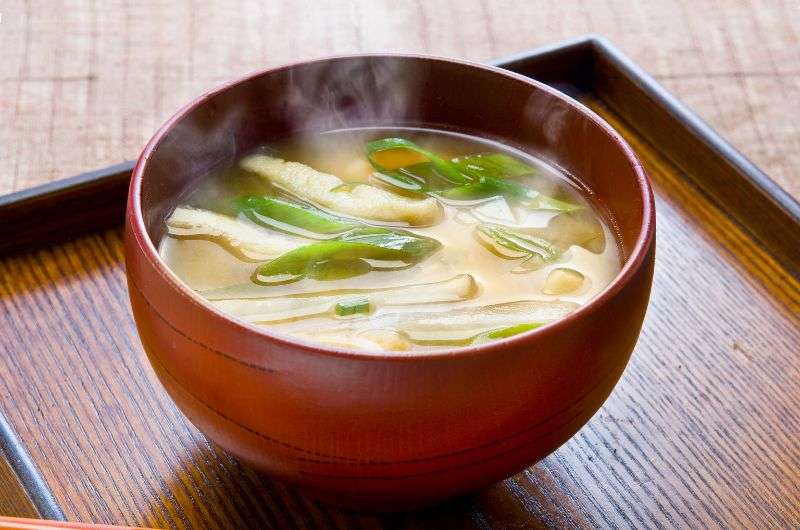
Some cultures might find it bad manners, but in Japan you can drink soup straight from the bowl
Drinking your soup straight from the bowl is A-ok in Japan! Extra points if you slurp loudly while doing it, which signifies how tasty you think it is. You’ll mainly see people drinking their soup when it is an appetizer, served in a small bowl and not full of a million ingredients. It would be very hard to drink a huge bowl of ramen, for example. If unsure, do what the locals are doing.
16. Vegetarians will have a semi-hard time in Japan
Trying to be a vegetarian in Japan is like playing a culinary game of hide and seek—challenging but not impossible. You’ll do way better if you’re a pescatarian. With a diet historically rich in fish and seafood, vegetarians might find navigating Japanese menus a bit like decoding a complex puzzle. Things that sound meat-less, even meals with tofu as the main protein, are often made with a meat broth, so you’ll need to brush up on your language skills to make sure what you’re eating is ok for you.
Only a small fraction of restaurants specifically cater to vegetarians. But armed with a bit of knowledge and some key phrases, vegetarians can enjoy Japanese food, too. If all else fails, rice, tofu veggies, vegetable tempura, and vegetarian sushi it is!
17. Good sake is served cold
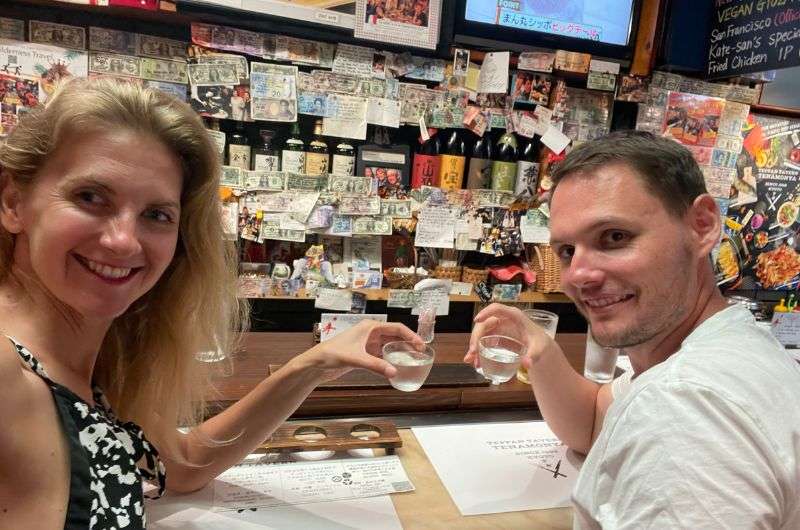
Sake=rice liquor
Sake is a Japanese rice liquor that is mostly enjoyed during the appetizer portion of your meal (but you can keep sipping it with your sushi, and you’ll sometimes also get it as a digestive).
You can have it hot or cold, but remember it’s not a shot, so sip it slowly like you would wine. It’s a social drink, so if you finish your (tiny) cup, there will be somebody who will probably refill it. If you don’t want a refill, keep a bit of sake in your cup. Oh, and hold it with both hands.
Top quality sake is never consumed hot, because the heat would destroy the precisely brewed smells and tastes that they worked so hard to get in there. Then again, you also don’t want your sake super cold, which does nothing for the taste, either.
18. You can drink and drive in Japan (a little bit)
The legal blood alcohol limit in Japan is 0.03%, which for most people will mean one drink during dinner. Of course, it’s all relative and has to do with your weight and what you drink and how fast you drink it, so don’t quote me on that. For reference, in the US, it’s 0.08%.
19. Getting wasted is ok
I can’t speak for every Japanese person in Japan, but for such a reserved and well-behaved nation, they sure do know how to get shit-faced! I was surprised how ok it seemed to drink way past “I’m feeling less shy” and take it to “I don’t know who you are but I love you!” really fast. Like, I ran into totally wasted people way more often than in Scotland and Denmark, which is kind of a red flag, right?
It seems that whiskey, beer, and sake are the Japanese alcohols of choice.
20. Good food is easy to find… in cities
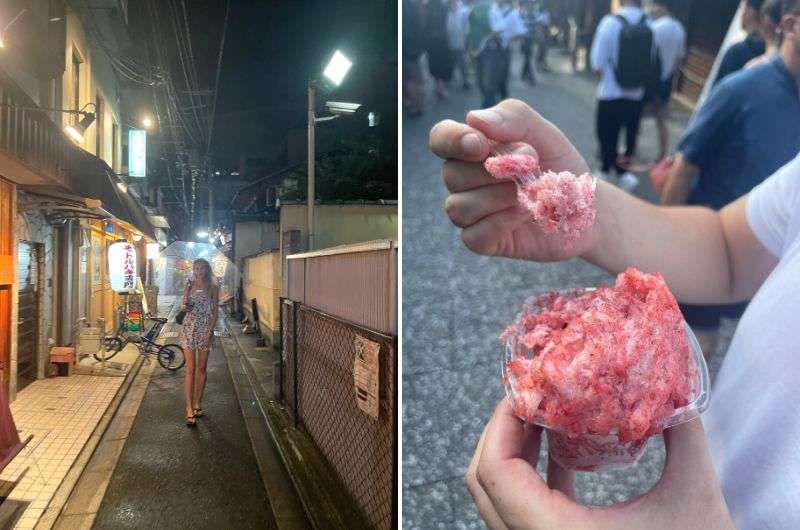
For good food, stay in the city
You don’t need to reinvent the wheel—if you want great food in Japan, choose either fine dining or izakaya, basically a Japanese pub. Izakaya translates to ‘stay-drink-place’ and typically serves cheap comfort food that’s delicious and makes sitting and nursing your beers that much more pleasant.
One thing I noticed though is that the further you are from a bigger city, the harder it is to find a place where you can eat well. Maybe it’s just the westerner in me, but the selection in villages wasn’t exactly great.
21. Be ready for cash payments in Japan
For a place that the entire world accepts as the country of the future, they sure are stuck on using cash for everything! I’d expect cashless payments to be standardized in Japan, but the opposite is true. It is partly due to the preference to get the transaction done then and there, partly because of their worry about data security, and partly because it’s tradition and that’s apparently hard to change. So, always have cash on hand in Japan.
22. Get a lunch box for the train!
You’ll certainly spend time on Japanese trains, because how could you not, and how best to enjoy the trip than with a nice snack? Enter ekiben, a Japanese lunch box specifically for train travel. The name combines the words bento, which means lunch box, and eki, meaning train station.
Buy your ekiben at the train station or sometimes directly on the train. You’ll get an assortment of goodies in bitesize portions, complete with chopsticks or a spoon. While most of ekibens can be eaten cold, there are even hot varieties. Sometimes, train stations come equipped with mirowaves, but the better (and more fun) option is a self-heating ekiben! Pull the string and wait for the chemical reaction to work its magic. It really feels like magic, and you can tell tourists get such a kick out of this (unlike locals).
23. Japanese food can be spicy!
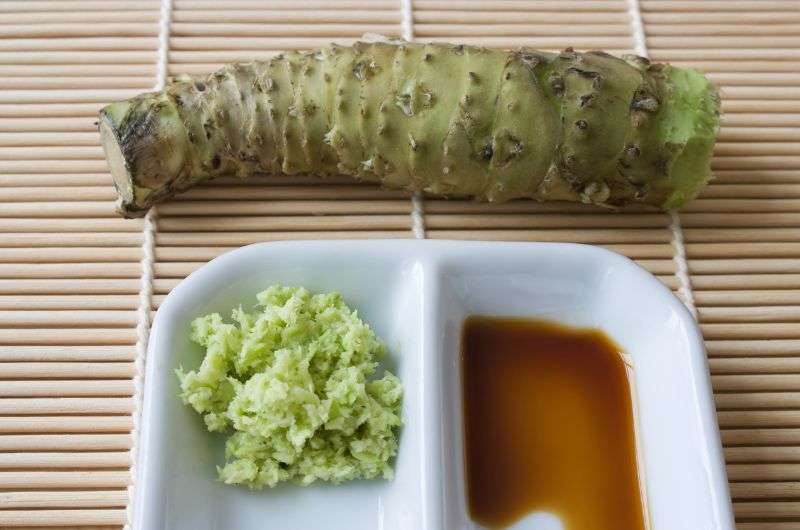
Of course, when you say spicy in an article about Japan, everyone thinks of wasabi!
Japanese food isn't all subtle flavors and zen-like simplicity. There's heat in there too! Wasabi (the real kind) and karashi (that's Japanese mustard for the uninitiated) will kick your taste buds into high gear. You could try spicy tantanmen for a change of pace—a bowl of fiery ramen that’s savory and sweet at the same time. But amid all this, the real MVP is umami, that savory flavor that makes you go, "Hmm, what's this?" And you never really find out how it’s done anyway, but you like it anyway.
24. Learn the Japanese food lingo
In Japan, meals begin with "itadakimasu" and end with "gochisosama deshita" (or “gochiso” in a more casual setting) expressions of gratitude that connect us to the food, its origins, and those who prepared it.
At the start of the meal, you’ re saying "to humbly receive" as a sign of respect for the food, your host, probably even the pot the food was cooked in. And at the end it’s a very big thanks, praising your meal as “a feast”, however simple it might’ve been. You can also say it in a restaurant as a sign that you are done with your meal. Unless you’re not actually done. Then, you may need to use “okawari kudasai” (“More please!”).
More vocabulary: The Japanese word for food is "Tabemono", use "nomimono" for drinks, "mizu" for water, “birru” for beer, and of course, "shoyu" for soy sauce. “Kudasai” means please and “Arigato gozaimasu” is the polite way of saying thank you (drop the gozaimasu in very casual environments), which is helpful at all times.
25. Teppaniyaki - Iron plate
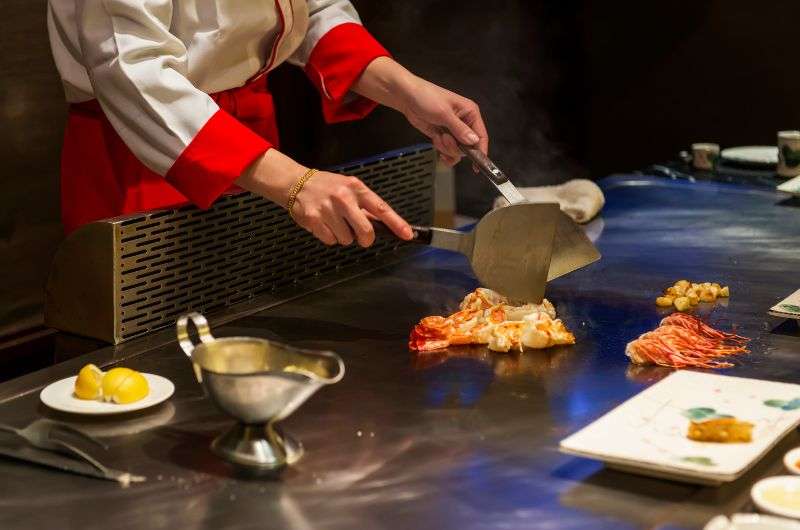
Teppanyaki is a food preparation by way of an entertaining show
Teppaniyaki restaurants are those where your food is cooked right in front of you on a large iron griddle, so you basically get a live cooking show. It's part drama, part comedy, and 100% skill. Seriously impressive. It’s an exciting way to eat, because the food is as fresh as it can be, plus you get sizzling delicious ingredients right in front of your hungry face. A lot of teppaniyaki restaurants are higher-end establishments where they only use top-notch ingredients like fancy beef and seafood. But even just rice with garlic on top sent me to foodie heaven! It’s that good.
You either sit at the bar right at the kitchen where the griddle lines the entire bar, or there can be a griddle as part of each table at the restaurant.
My 6 favorite restaurants in Japan
On my quest for the best places to eat in Japan, I leaned about Tabelog, the go-to restaurant app for locals. On par with Japan perfectionism, anything rated 3.5 or higher is a culinary jackpot, even though it seems like it’ll be just ok. Remember, “just ok” is Japanese for “fantastic”. From hole-in-the-wall ramen shops to upscale sushi, this app has it all.
If you don’t want to deal with apps, go for Google Maps reviews over Tripadvisor.
These are the top restaurants we tried during my 3-week trip to Japan:
The Fujija Gohonjin (Nagano)

THE FUJIYA GOHONJIN
Right next to Zenkōji Honbō Daikanjin in Nagano, there's Fujiya Gohonjin, a place from 1641—yeah, you heard that right, it’s ancient! It's not your usual joint; it's got online booking and a website in English (a rare find in these parts). The serviceis top-notch, like, seriously impressive. We spent about USD 100 for the two of us, but we got our hands on some divine wagyu steak, drizzled with this mind-blowing bagna cauda fish and veggie sauce. You can choose from à la carte or tasting menu. Easily one of the best restaurants of our entire trip.
Further reading: The best places to visit in Nagano
Monta (Hakone)
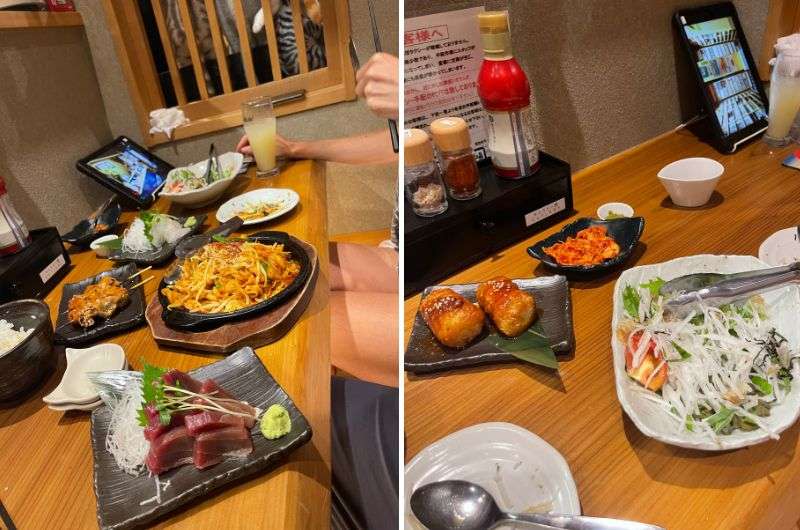
Monta... sure, let’s order some more! The tablet made it easy to overeat (severely!)
Monta is the place to go if you want to enjoy something wonderfully quirky and Japanese but still want to get a great meal. Think sitting on the floor, a cat obsession, a library and games (board and video). You order your food on a tablet, which makes it easy to go overboard and order 10 “tapas” like us idiots, thinking it’ll be just a little bite each. It wasn’t. We almost bursted at the seems eating the mountain of food that kept coming to our table from the kitchen!
Further reading: Hakone Guide
Tokyo Sushi (Hakone)
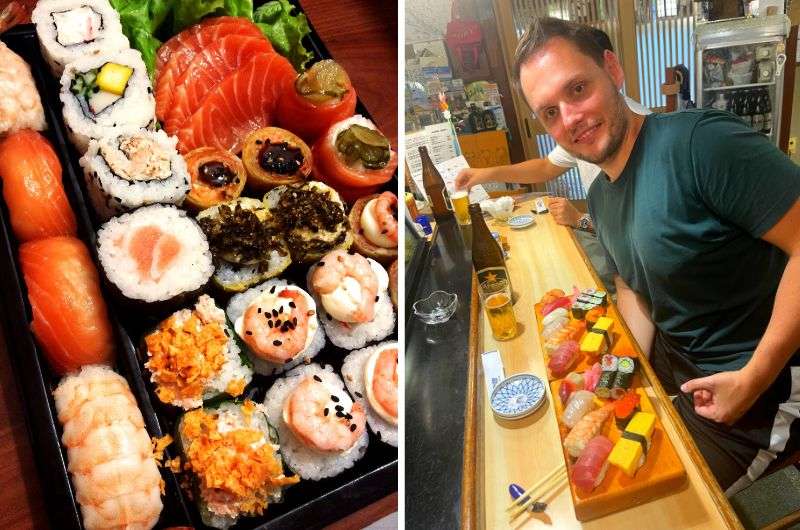
Tokyo Sushi
Tokyo Sushi is a mini restaurant in Hakone, serving—obviously—sushi. But it’s the best quality sushi I’ve ever seen and tasted. It felt authentically Japanese, made by a chef with 40+ years of experience, and it was unlike anything I’ve ever experienced before. Make reservations and make it a point in Hakone (near Mt. Fuji) to go to this restaurant.
Further reading: Hakone guide
Smoked grill and lotus (Kyoto)
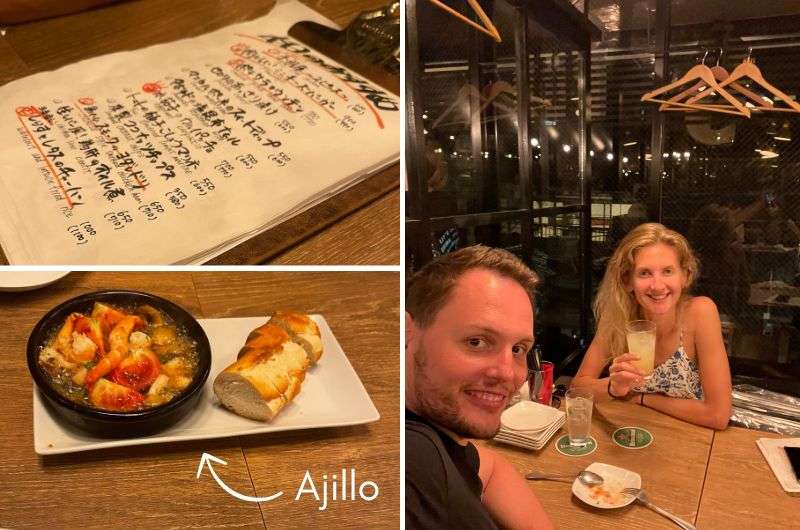
Smoked & Grill Lotus
It’s a very strange feeling to be taking an elevator into a restaurant, so don’t be surprised, because that’s exactly what you have to do to get into Kyoto’s Smoked & Grill Lotus. But the food!
First off, the guests are a mix of tourists and locals, and the locals are way more rowdy than the westerners. That always makes me grin, considering how uptight conservative the Japanese seem most of the time. Maybe it’s the JPY 700 drinks they serve? Show me another big city where you get a cocktail for less than 5 bucks!
We had to order the ajillo twice, it was that good—a pan full of garlicky shrimp served with a baguette that reminded me of the pil pil I had in Chile and it was to die for. Or at least to order twice for. The bbq ribs we had after that made it to the very top of my bbq ribs list (you don’t have one yet?). So, so good!
Further reading: Kyoto – Nara – Osaka itinerary
Dragon burger (Kyoto)
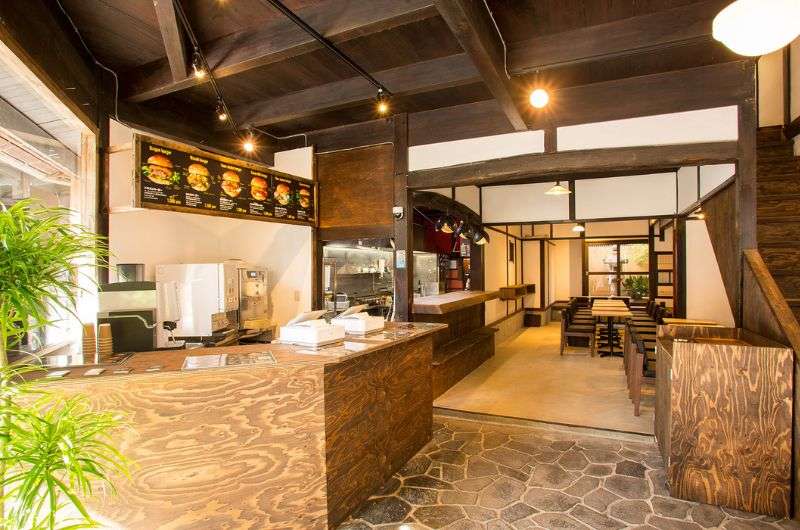
DRAGON BURGER / TOFUKUJI,FUSHIMI-INARI KYOTO JAPAN
I know, I know, you’re in Japan, why are you having burgers? Well, because this may just be the best burger I’ve had, EVER. I don’t even think it was because I was missing western food, it was just really, really good. Dragon Burger is a small bistro-type establishment in Kyoto, so you just eat and run, making it a perfect stop on any Kyoto itinerary. We visited it before heading to the 1,000 torii gates of Fushimi Inari Taisha, and it was great energy boost!
Further reading: Kyoto – Nara – Osaka itinerary
Teppan Tavern Tenamonya (Kyoto)
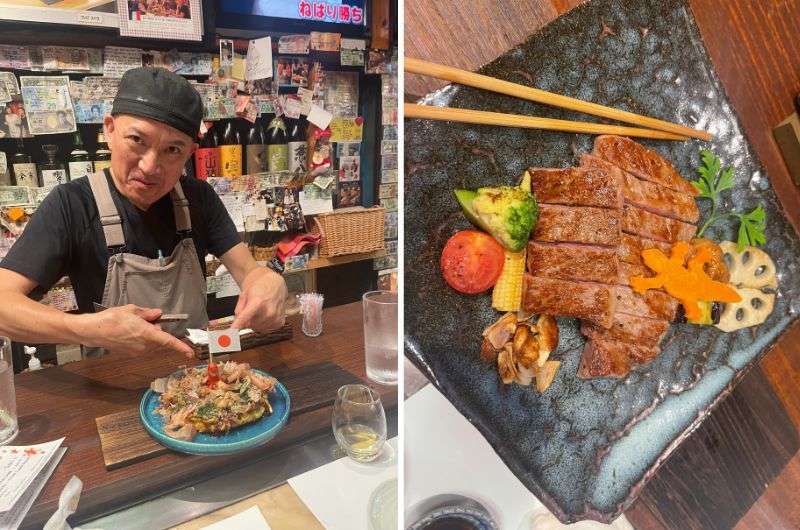
Teppan Tavern Tenamonya
Now, let me tell you about my visit to Teppan Tavern Tenamonya in Kyoto. This place had the quirkiest reservation system I've ever seen, hands-down. Their email communication was a riot—it was like receiving an invite to a secret club, where punctuality is your ticket in, and the door locks behind you like some spy movie.
The email sounded like a mix between a warm invitation and a warning: "We lock the door because people without reservations try to storm our culinary castle, and sometimes cry when we try to make them leave."
Despite the odd reservation antics, the staff was super friendly (though—dare I say it—slightly fake?), and the food was superb. But a word to the wise: maybe skip their local specialty, Okonomiyaki. A weird cabbage pancake? No thanks.
The reservation email ended with a plea not to be a no-show, reminding me that by securing my seat, I had triumphed over a hundred other hungry contenders. It felt like winning a golden ticket to Willy Wonka's Chocolate Factory, but for grilled food.
Further reading: Kyoto – Nara – Osaka itinerary
This post contains affiliate links. I earn a small commission if you make bookings through my links, at no additional cost to you. Thank you for your support!
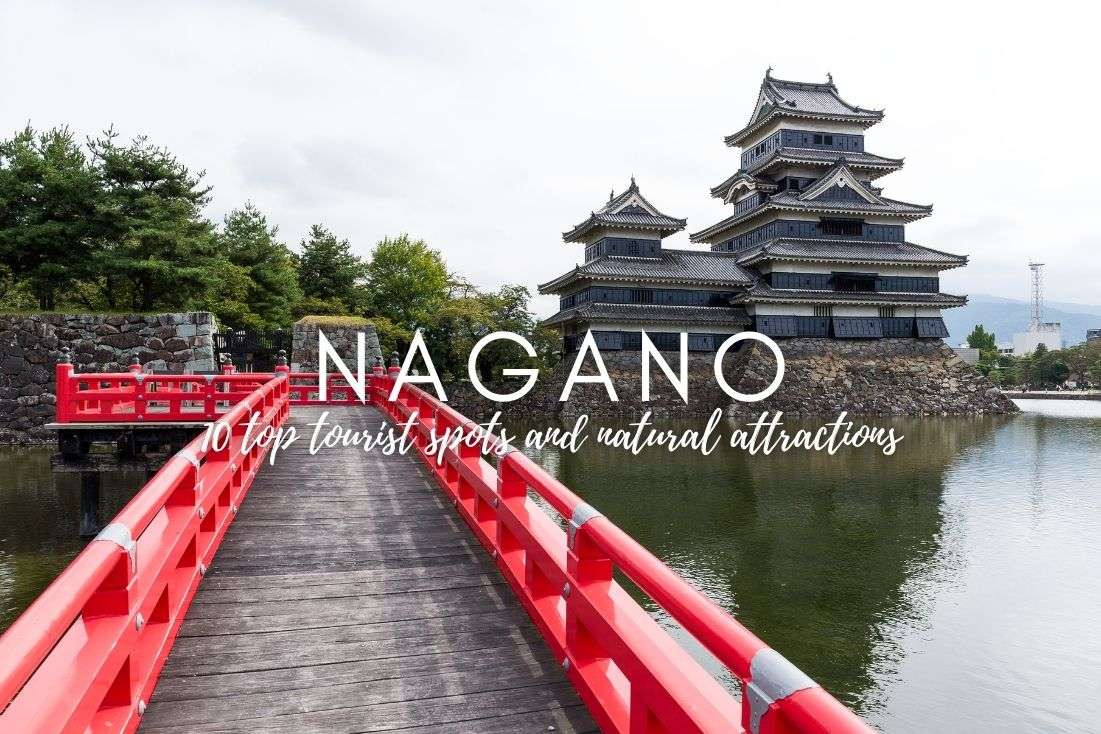
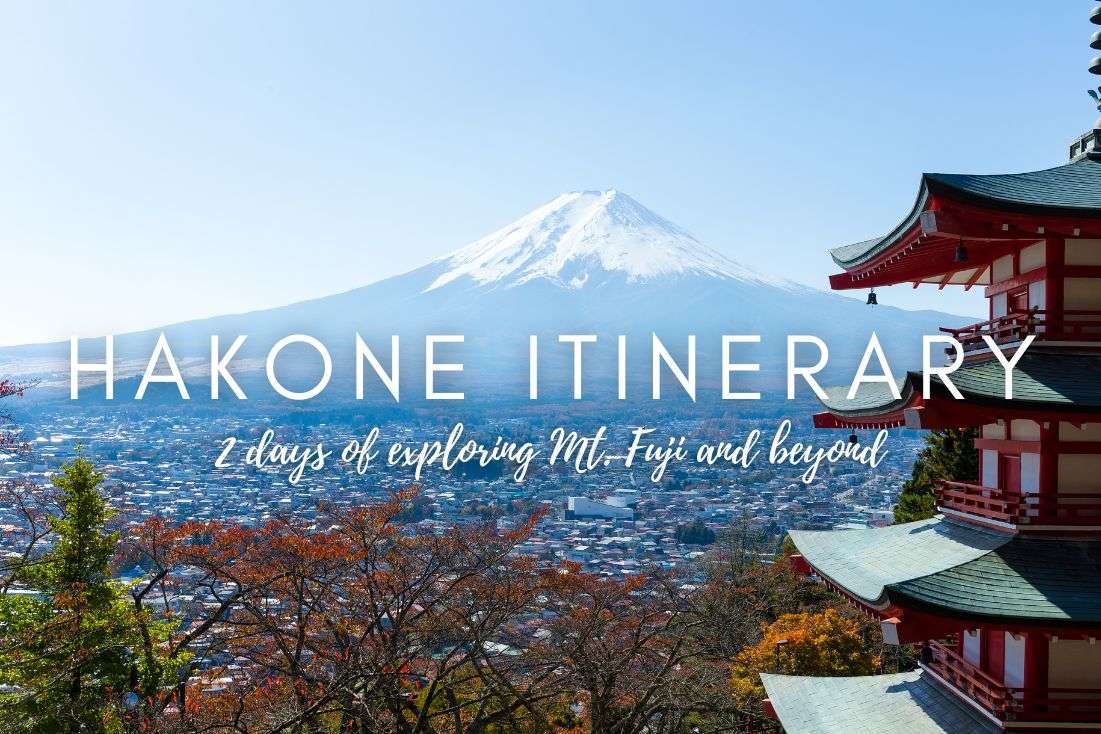
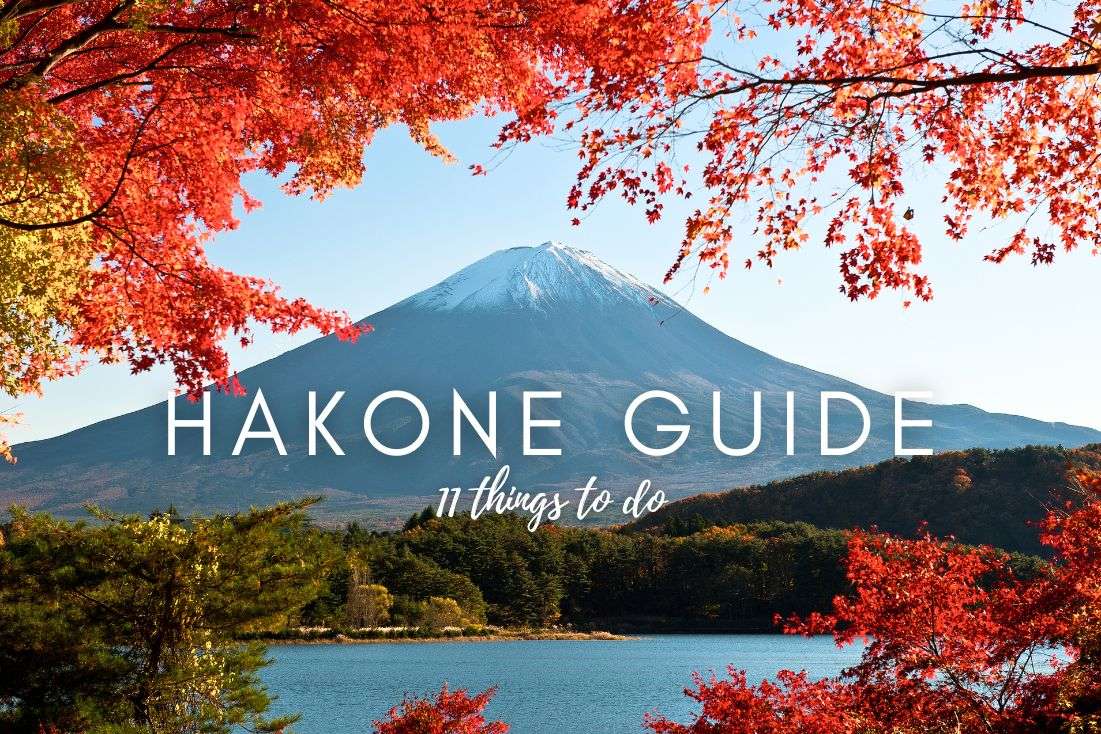




Comments
Thoughts? Give us a shout!